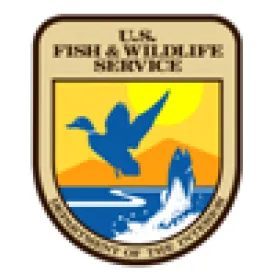On February 9, 2018, the United States Fish and Wildlife Service (USFWS or Service) issued a Final Rule listing the Texas hornshell (Popenaias popeii) as endangered under the Endangered Species Act (Act). The Final Rule becomes effective on March 12, 2018 and is essentially unchanged from the proposed rule that was published on August 10, 2016. The Service notes that the Texas hornshell is an endangered species based on impairment of water quality, loss of flowing water and accumulation of fine sediment, predation, and barriers to host fish movement and the effects of climate change.
Designation of the Texas hornshell as endangered could impact ranching, oil and gas and other business operations in areas where there are existing populations of the Texas hornshell, particularly those activities that may result in the discharge of chemicals or fill material into certain waters or alter their flow or channel configuration.
Where the Texas Hornshell Lives and What the Designation Means
Currently five known populations of Texas hornshell remain in the United States: Black River (Eddy County, New Mexico, Pecos River (Val Verde County, Texas), Lower Canyons of the Rio Grande (Brewster and Terrell Counties, Texas) and Lower Rio Grande near Laredo (Webb County, Texas). The distributions are illustrated on a map (83 Federal Register 5722). The Service states that of these five known remaining isolated populations in the United States none are currently considered highly resilient and finds that the Texas hornshell is in danger of extinction throughout its range.
In the Black and Delaware River watersheds in New Mexico, the Service and other state and federal entities signed certain candidate conservation agreements and candidate conservation agreements with assurances. The USFWS notes that some private landowners enrolled in those agreements. For private landowners who chose to enroll in those agreements, the agreements will provide the landowner with a permit for incidental take of the species during the course of otherwise lawful activities in the Black and Delaware River watersheds in New Mexico. The four populations of Texas hornshell located in Texas will not be affected by the agreements.
Activities that Could Result in a Violation
Section 9(a)(1) of the Act makes it illegal for any person subject to the jurisdiction of the Act to take endangered wildlife unless a permit for incidental take has been issued. It is the policy of Service when a new species is listed to identify to the maximum extent practicable based upon best available information non-comprehensive lists of activities that are unlikely to result in a violation of Section 9 of the Act if carried out in accordance with existing regulations and permit requirements. For the Texas hornshell, the Service lists the following activities as being unlikely to result in violation of Section 9:
- Normal agricultural and silvicultural practices, including herbicide and pesticide use, which are carried out in accordance with any existing regulations, permit and label requirements, and best management practices: and
- Normal residential landscape activities.
The Service lists the following as a non-comprehensive list of activities potentially resulting in a violation of Section 9 of the Act:
- Unauthorized handling or collecting of the species;
- Modification of the channel or water flow of any stream in which the Texas hornshell is known to occur;
- Livestock grazing that results in direct or indirect destruction of stream habitat; and
- Discharge of chemicals or fill material into any waters in which the Texas hornshell is known to occur.
Additional Background and Resources
The Service notes that questions regarding whether specific activities would constitute a violation of Section 9 of the Act should be directed to the Texas Coastal Ecological Services Field Office of the USFWS.
The Service has determined that in the case of the Texas hornshell designation of critical habitat is prudent. The Service has reviewed the available information pertaining to the biological needs of the species and habitat characteristics where the species is located and anticipates publishing a proposed critical habitat rule in the near future. The Service has concluded that critical habitat is not determinable for the Texas hornshell at this time.



 />i
/>i

